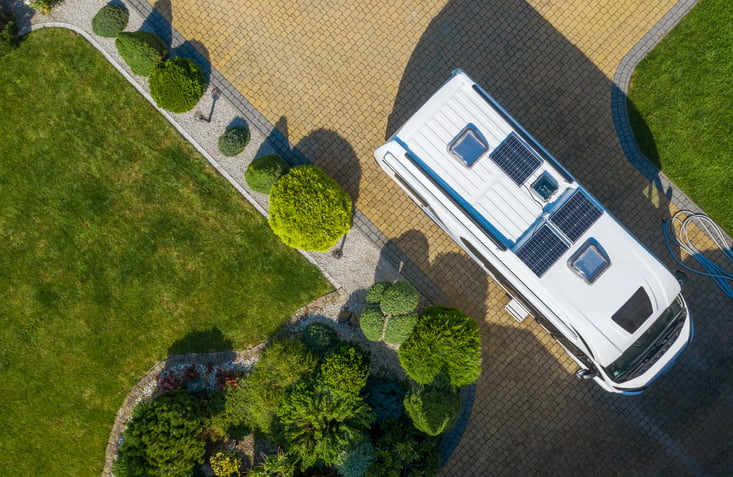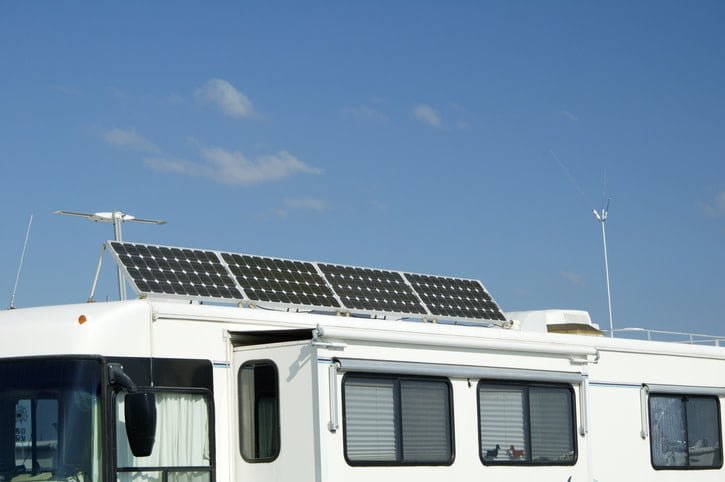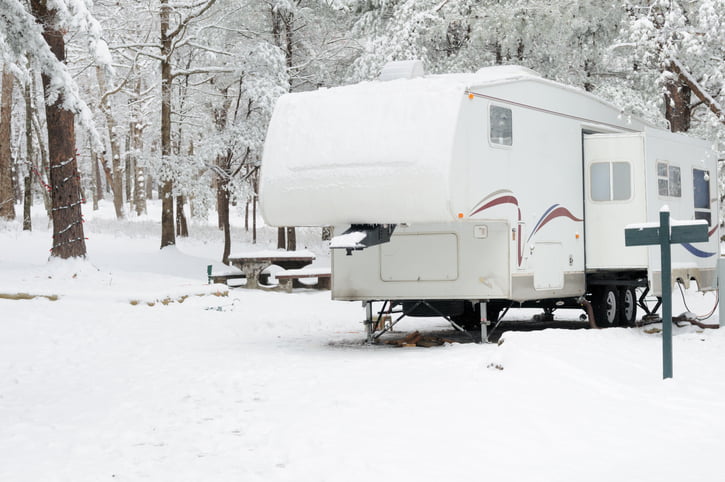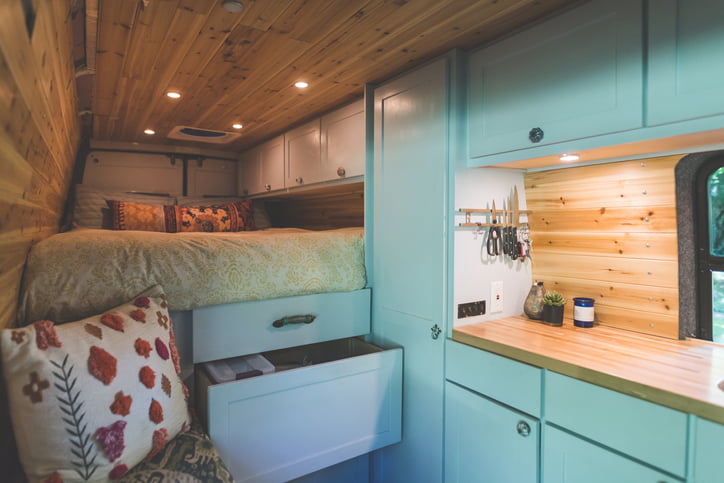I’m here to argue that is EXACTLY what we should be doing (unless we’re the ones driving – PLEASE ensure the vehicle is in park before any roof inspecting!) I use this example to highlight a vital structural component of your RV that is also often neglected – the roof. If anything, the roof is probably even further from mind as it really is out-of-sight. Then, when it does come to mind, it is usually when you notice a leak. Of course by then, it’s too late to do anything but go into crisis mode, and then disaster control.
So what is covering your roof? Let’s start by reviewing the four principal types of RV roofs in use today to keep them TOP of mind:
1. Ethylene Propylene Diene Monomer – simply called EPDM. This is a rubber membrane laid over a flat roof.
2. Polypropylene and Ethylene create another rubber compound called TPO. Very similar to EPDM.
3. Fiberglass, hardened with resin, is another straightforward choice.
4. Aluminum sheets can also be used for roofing. Doing this is less common, but if you buy an Airstream, that is what you are getting.
The majority of RV roofs are covered with either EPDM or TPO – so what’s the difference?
EPDM, is black and a black RV roof is not a good choice, not least because of the heat absorption that occurs– so they have to colour the material to make it white, which adds to the cost. TPO on the other hand is naturally white – that’s a cost saver. Due to its rubber composition, EPDM doesn’t dent or scratch. While it can tear (tree branches are a common cause of that), repairs are usually simple. Liquid adhesives or roof membrane repair kits are an easy DIY fix.
UV rays take a toll on roofs, so you should be doing a roof inspection so you can (preferably annually) calculate costs for a possible replacement, which is typically every 10 – 15 years.
Also, when buying an RV, you should always climb up and have a look at the roof – and you should be looking for these two things in particular: First, how many seams are there? The less the better. The second area to inspect is the quality of the sealing around the vents, AC units and antennas. These areas deserve special attention every year as they are often the first to leak.
TPO, while cutting costs from being the naturally white option, often comes in smaller widths rolls of rubber come (depending on the manufacturer) which in turn leads to more seams (not optimal). Often customers will look at the thickness of the TPO material and assume that more is better. Sadly, despite its greater thickness, this rubber ages at exactly the same rate regardless of width.
Dried rubber frequently leads to cracks, most of which are generally easy to repair. But, you have to catch them before they leak. Also worth mentioning is that despite many manufacturer claims, TPO may very well only last the same 10 – 15 years that EPDM does before degrading to a critical point.
A roof made of fibreglass is tough, doesn’t rot and is easy to shape. It can also be made with any colour. However, it is also labour intensive and as a result, can be costly. Adding to the potential costs, is that any damage costs significantly more to repair. This means you up there with a caulking gun won’t do the trick, or do it well. Fibreglass has very little thermal protection. It absorbs heat and when it exceeds certain temperatures, can crack or split all on its own. It does, however, hold up well to UV rays.
There are few aluminum roofs around, and this is for a few reasons. The first being the cost of the material itself and the cost of installation. As it can’t be glued, it has to be fastened together, which is a labour intensive process. On the plus side, aluminum will outlast any of the rubber roofs and it is very tough. The biggest issue you will face with aluminum is the possibility of leaks, both along the seams, and at each fastener location. However, as mentioned above, unless you are buying an Airstream, you probably won’t be dealing with an aluminum roof.
As for my thoughts on roof maintenance I want to relay a story from my youth.
Back in the early 80’s, I was a transportation manager at a TNT trucking company where we introduced a company-wide ‘preventative maintenance’ schedule for all our equipment. Now at the time, this was a foreign concept to most people, myself included. At that point, we did what everyone else did. Quite simply, when a truck broke down, we fixed it. However, some very smart guys figured out that the actual ‘cost of downtime’, when added to the cost of repairs, was much higher than actually changing out parts, before they broke, on a regular basis. That concept was one that took some getting used to, as is found with most new ideas. Today though, most auto dealers follow this same type of program. Their philosophy? It pays to replace parts that have yet to fail, but have been deemed likely to in the future, even if on the surface such a concept seems strange.
A final note on the roof, and for that matter, all surface, mechanical, and electrical components on your trailer: Replace parts on a schedule – before they fail.
Your dealer can help you set up a custom schedule for your RV that you can consult as time goes on. This preventative maintenance based form of scheduling also has the advantage of spacing out the cost of replacements. When the repair isn’t critical, it can also be scheduled for the off-season at a time when the dealer will be happy for the work (potentially lowering the cost).
Finally – ask yourself what your RVing time is worth? Any breakdown while on vacation is costly in terms of time lost and the anxiety and frustration of scrambling to find a part or service while on the road. The way to avoid this is preventative maintenance! Don’t forget: A few times a season, climb up and have a good look at the roof while you have the time and opportunity to fix any issues you might find.
It’s said that ‘knowledge is power’. And when you use that power to save money because you know what to look for – that’s when you’re really using your brain. A final takeaway? Take good care of your roof, whatever it’s made of, and not only will it take care of you, it will save you a boat-load of money – on your boat, roof or RV!




